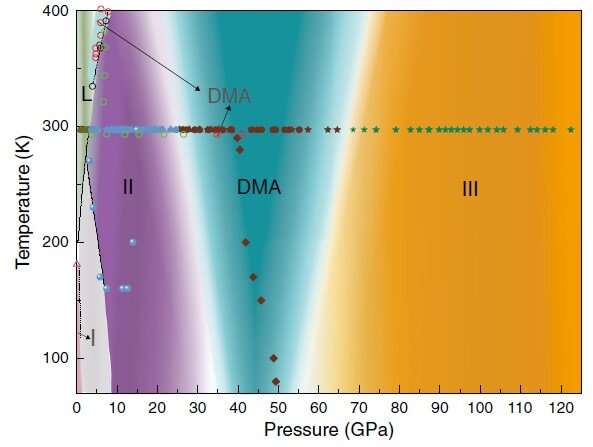Ionic phases of ammonia-rich hydrate discovered at high densities

A research team has studied the spontaneous ionization of ammonia hemihydrate (AHH) under compression and discovered ionic phases of ammonia-rich hydrate at high densities.
The team was consisted of researchers from the Hefei Institute of Solid-state Physics (ISSP) of the Hefei Institutes of Physical Science (HFIPS), University of Edinburgh, and the Center for High Pressure Science & Technology Advanced Research and the results of this study were recently published in Physical Review Letters.
Mixtures of ammonia and water are major components of the "hot ice" mantle regions of icy planets. AHH plays a pivotal role as it precipitates from water-rich mixtures under pressure.
The team compressed an exemplary ammonia-water compound to over 1.2 million atmospheres, corresponding to a depth of about 9,870/8,085 kilometers inside Uranus/Neptune, and tracked its structural and dynamical properties. The calculations demonstrated that the compressed mixture transforms into a very stable ammonium oxide, (NH4+)2O2-.
The presence of such a stable ionic compound deep inside icy planets will influence our understanding about such planets' formation and evolution to the present day. These intriguing ionic phases can exist over a considerably wide pressure region hence greatly extend the phase diagram of AHH.
More information: Wan Xu et al. Ionic Phases of Ammonia-Rich Hydrate at High Densities, Physical Review Letters (2021). DOI: 10.1103/PhysRevLett.126.015702
Journal information: Physical Review Letters
Provided by Chinese Academy of Sciences





















